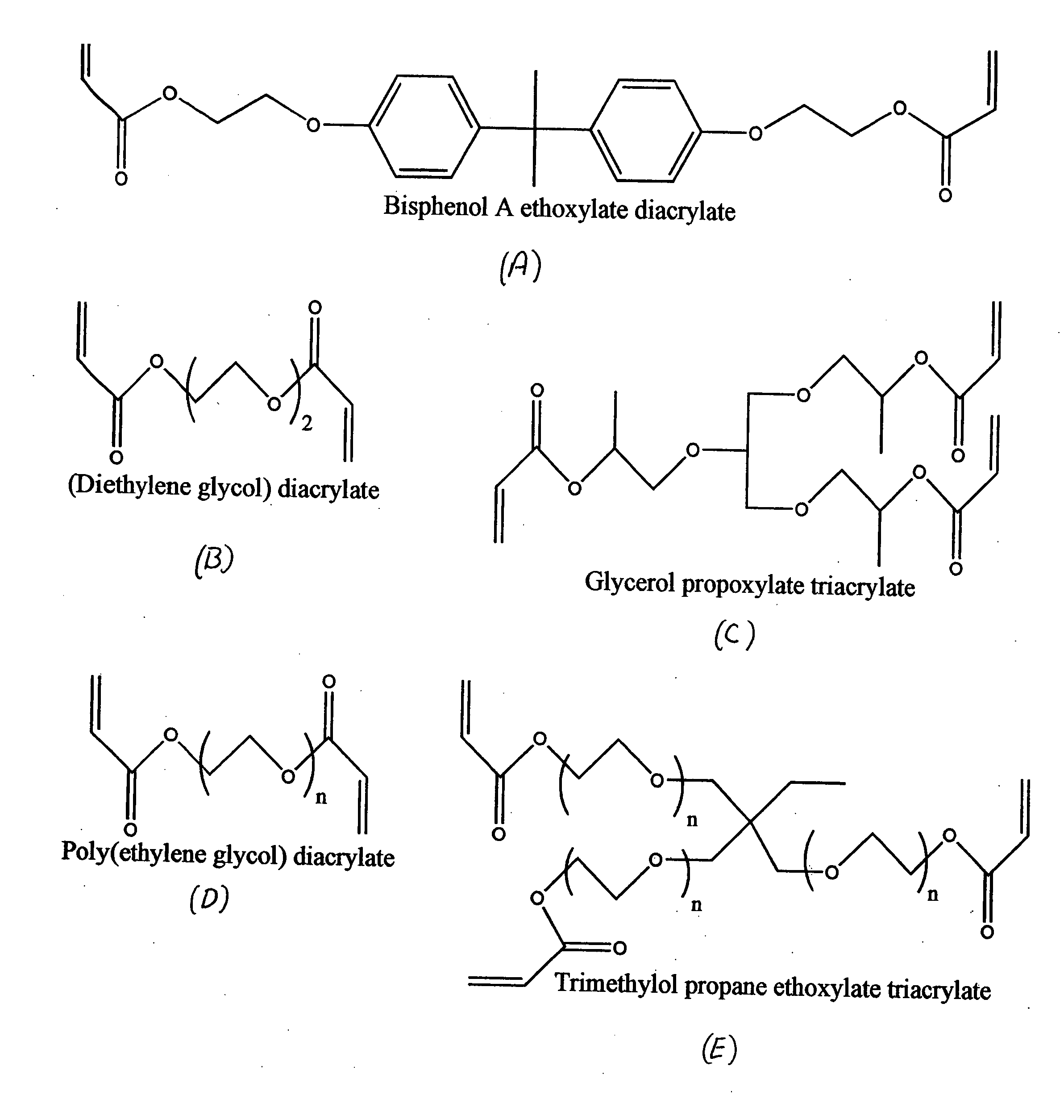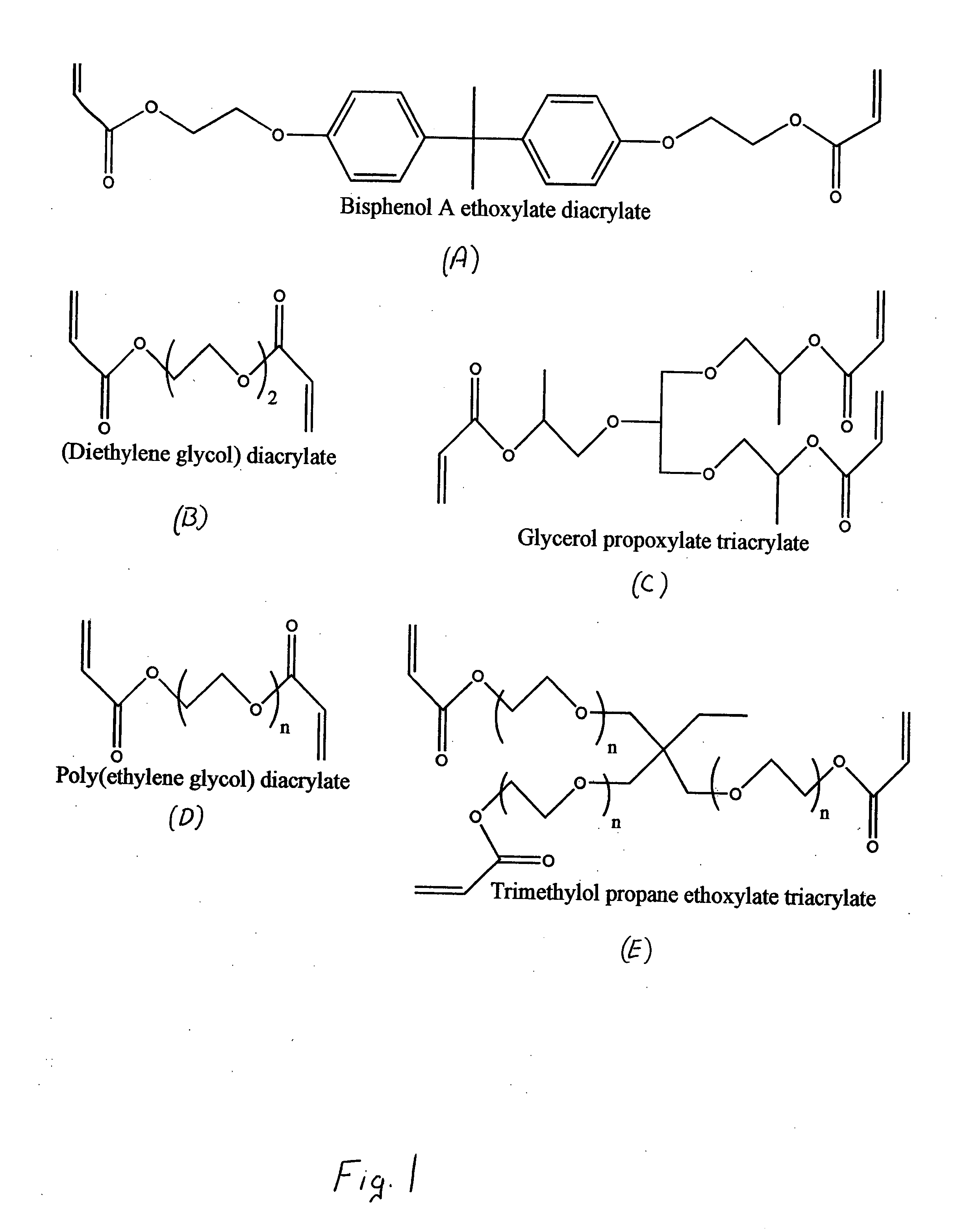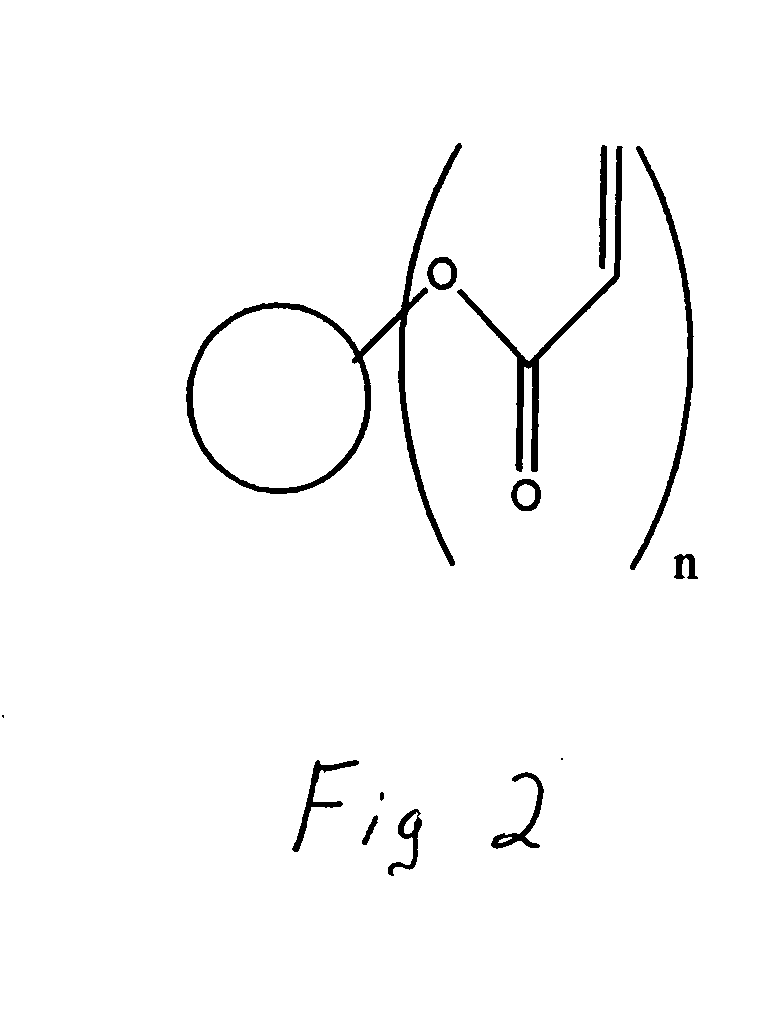Amphiphilic polymer micelles and use thereof
a polymer micelle and amphiphilic technology, applied in the field of polymer nanoparticles, can solve the problems of difficult control of the size of nano-particles during polymerization, the inability to reliably produce acceptable nano-particles, and the inability to develop a solution polymerization process capable of reliably producing acceptable nano-particles, etc., to achieve improved high temperature characteristics, improve the effect of high temperature properties and improved properties
- Summary
- Abstract
- Description
- Claims
- Application Information
AI Technical Summary
Benefits of technology
Problems solved by technology
Method used
Image
Examples
example 1
Preparation of the Polymer Particles
[0097]A stainless steel two gallon reactor was charged with 1.23 lbs hexane and 2.00 lbs. butadiene. The jacket of the reactor was then heated to 165° F. When the temperature of the contents of the reactor reached 150° F., then 4.7 ml of 1.68 M n-butyl lithium, which was diluted with about 20 ml of hexane was added. Due to the exothermic nature of the polymerization reaction, the temperature of the contents of the reactor elevated to about 181.9° F. The temperature elevation occurred during a nine minute period. About 15 minutes after the rise in temperature was complete, a styrene blend (1.35 lbs) was added to the reactor. Again, an exothermic reaction within the reactor elevated the temperature of the contents of the reactor to a temperature of about 193.9° F. The change in temperature takes about 15 minutes. About 15 minutes after the temperature elevation is complete, 4.01 lbs of hexane were added to the reactor. Then, 8.5 ml of 0.94 M dipheny...
example 2
[0101]A two gallon stainless steel reactor was charged with 1.2 lbs hexane and 2.01 lbs butadiene (22.4 weight percent butadiene). The jacket of the rector was heated to 165° F. When the temperature of the contents of the reactor reached 150° F., 4.7 ml of 1.68 M n-butyl lithium was added. The n-butyl lithium was diluted with about 20 ml of hexane. The exothermic polymerization reaction, which took about 8 minutes, raised the temperature of the contents of the reactor to 172.6° F. Thirty minutes after the top temperature was reached, styrene (1.36 lbs) was added to the reactor, the jacket of which was still heated to a temperature to 165° F. After the styrene was added, the resulting exothermic reaction raised the temperature to 175.3° F. during a period of time which lasted about 9 minutes. After 20 minutes, 4.00 lbs hexane was added, in order to favor the formation of micelles. 10 ml of divinylbenzene was then added. After incubating the reaction mixture for 20 minutes, 8 ml of 1 ...
example 3
[0102]A two gallon stainless steel reactor was charged with 1.22 lbs hexane and 2.02 lbs butadiene (21.0 weight percent butadiene). The jacket of the reactor was heated to 165° F. When the temperature of the contents of the reactor reached 150° F., 4.7 ml of 1.68 M n-butyl lithium was added. The n-butyl lithium was diluted with about 20 ml of hexane. The exothermic polymerization reaction elevated the temperature of the contents of the reactor to 180.9° F. during a period of time of about 11 minutes. The reaction mixture was mixed and incubated for about 15 minutes, then styrene (1.36 lbs) was added to the reactor, while the jacket temperature was still set at 165° F. The exothermic polymerization reaction raised the temperature of the contents of the reactor to 185.3° F. over a period of about 16 minutes. After the maximum temperature was reached, the reaction mixture was mixed and incubated for 18 minutes, then 4.04 lbs hexane was added. Thereafter, 10 ml of divinylbenzene is adde...
PUM
| Property | Measurement | Unit |
|---|---|---|
| diameter | aaaaa | aaaaa |
| polydispersity | aaaaa | aaaaa |
| mean average diameter | aaaaa | aaaaa |
Abstract
Description
Claims
Application Information
 Login to View More
Login to View More - R&D
- Intellectual Property
- Life Sciences
- Materials
- Tech Scout
- Unparalleled Data Quality
- Higher Quality Content
- 60% Fewer Hallucinations
Browse by: Latest US Patents, China's latest patents, Technical Efficacy Thesaurus, Application Domain, Technology Topic, Popular Technical Reports.
© 2025 PatSnap. All rights reserved.Legal|Privacy policy|Modern Slavery Act Transparency Statement|Sitemap|About US| Contact US: help@patsnap.com



